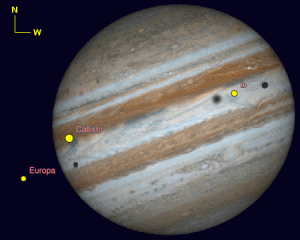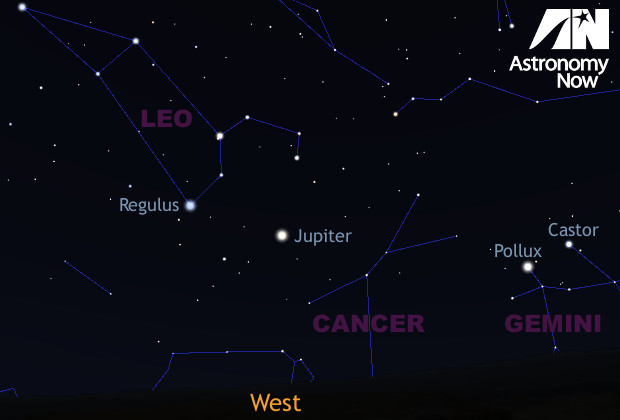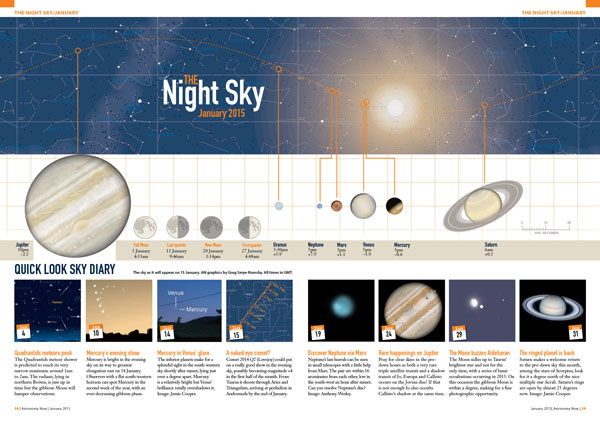
Griffith Observatory in Los Angeles will provide a live online broadcast of the Jupiter triple-shadow transit on its Livestream channel. The webcast will begin at 8:30 pm PST [Note: Pacific Standard Time is 8 hours behind UTC/GMT, so the event begins at 4:30 am GMT on 24th] and concludes at 11:00 pm PST (7 am GMT on 24th). A time-lapse video of the event will be available in the days that follow the event on Griffith Observatory’s YouTube channel.
3:11 am — Callisto’s shadow begins to cross Jupiter
4:35 am — Io’s shadow begins to cross Jupiter (double shadow event begins)
4:55 am — Io begins transit of Jupiter
5:50 am — Shadows of Io and Callisto almost merge
6:19 am — Callisto begins transit of Jupiter
6:28 am — Europa’s shadow begins to cross Jupiter (triple shadow event begins)
6:52 am — Io’s shadow leaves Jupiter’s disc (triple shadow event ends)
7:08 am — Europa begins transit of Jupiter (twilight noticeable in UK)
7:12 am — Io ends transit of Jupiter
8:00 am — Callisto’s shadow leaves Jupiter’s disc (Sun risen in eastern UK)
Observing Jupiter from the British Isles
Assuming that the seeing conditions are good, the shadows of the Galilean moons are easy enough to see even in small telescopes of good optical quality at magnifications of 100x or more. The shadows appear as tiny, inky-black dots that seem to dissolve away in poor seeing, only to reappear a few seconds later. Take time to scrutinise Jupiter and get familiar with the features on its disc. At 5:30 am GMT, the shadows of Io and Callisto begin to converge near the centre of Jupiter’s disc and by 5:50 am almost merge; can you see them as separate at this time? Ensure that your telescope has acclimatised to the nighttime temperature by taking it outside at least an hour before you wish to observe to get the best views.
Observing Jupiter from Los Angeles
Telescopes from the Los Angeles Astronomical Society and the Planetary Society will join Griffith Observatory’s telescopes to witness the event starting at 7:11 pm PST (23rd January in US). Griffith Observatory will close as usual at 10:00 pm PST, but the lawn will remain open until 11:00 pm PST. The inbound Griffith Park gate at Vermont Avenue will also close at 10:00 pm PST, as usual, but visitors who are already at Griffith Observatory may remain through the end of the triple-shadow transit.
The Observatory’s regular monthly star party will be held the following night, 24th January, during which time visitors will be able to see the planets Mercury, Venus, Mars, Uranus, and Neptune, as well as the Moon and Comet Lovejoy, C/2014 Q2.
Where: Griffith Observatory, 2800 East Observatory Road, Los Angeles, CA 90027
When: Friday, 23th January 2015, from 8:30 pm to 11:00 pm PST (live webcast) [Note: Pacific Standard Time is 8 hours behind UTC/GMT, so the event begins at 4:30 am GMT on 24th January.]
Inside the magazine
Find out more about what’s up in the night sky in the January edition of Astronomy Now. Never miss an issue by subscribing to the UK’s biggest astronomy magazine. Also available for iPad/iPhone and Android devices.




